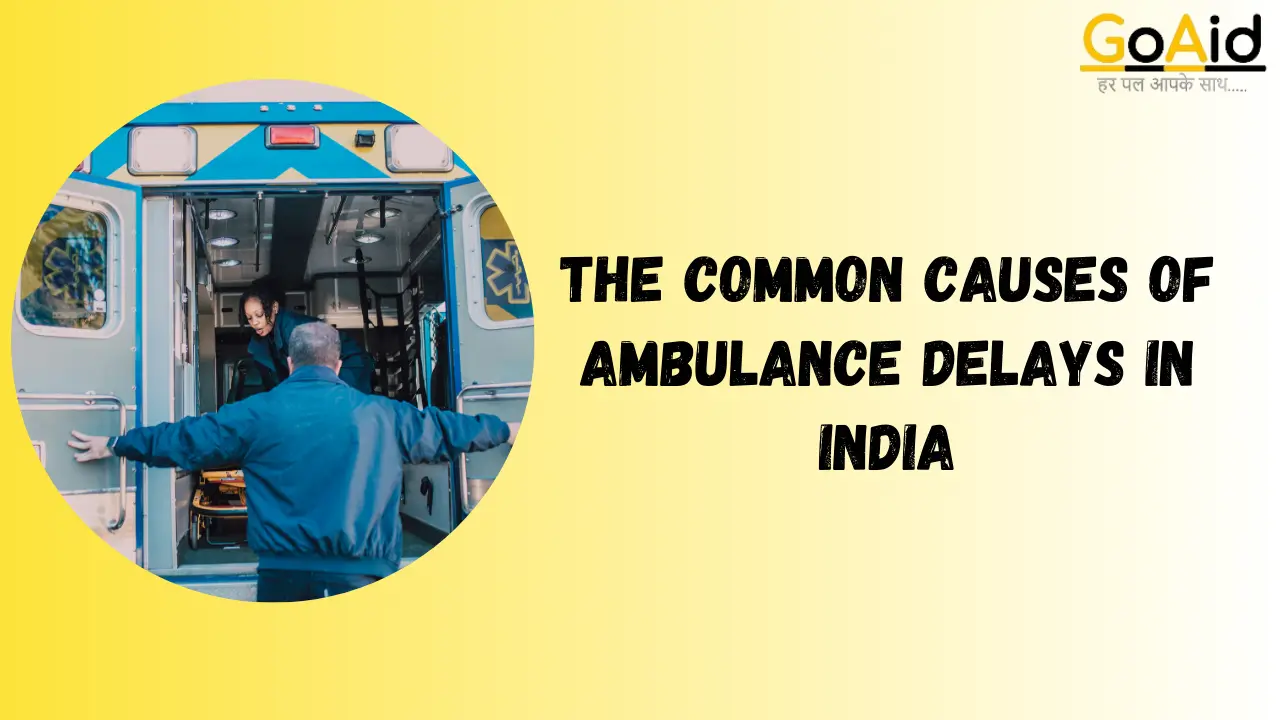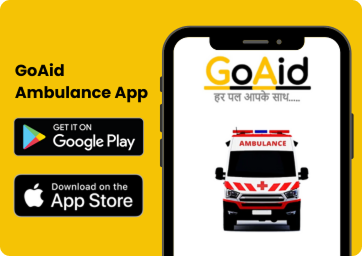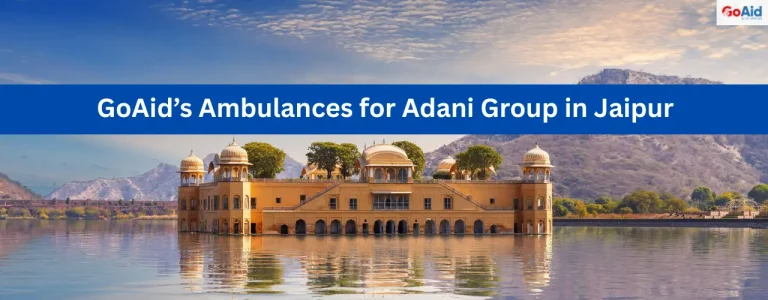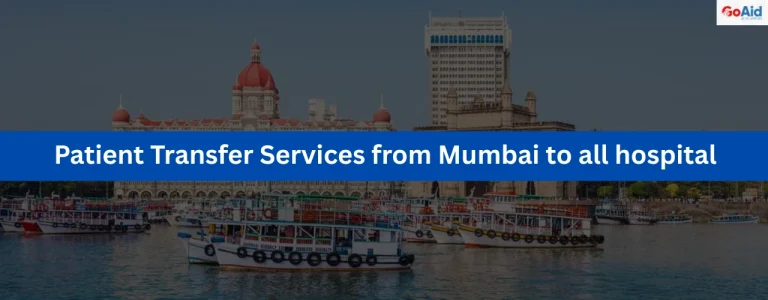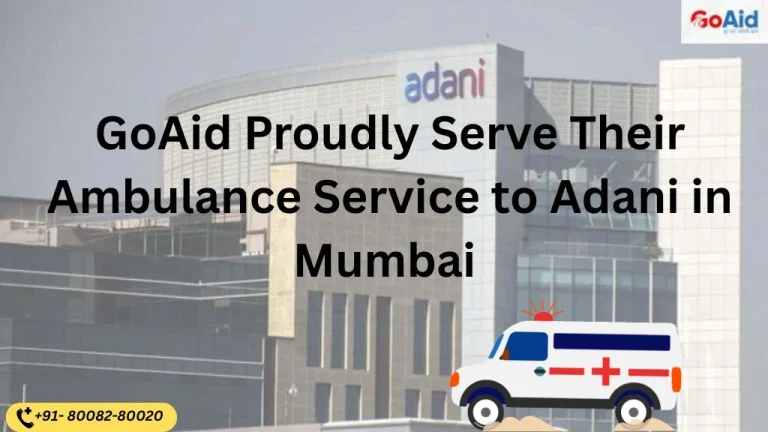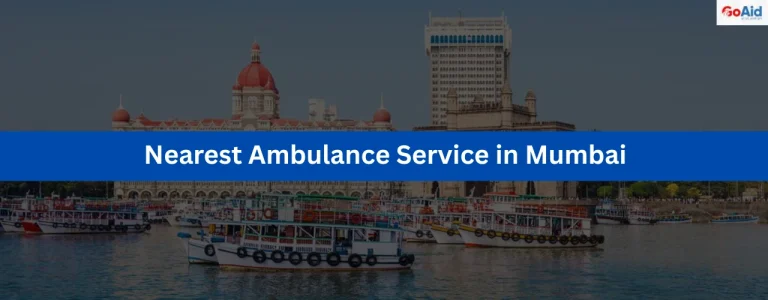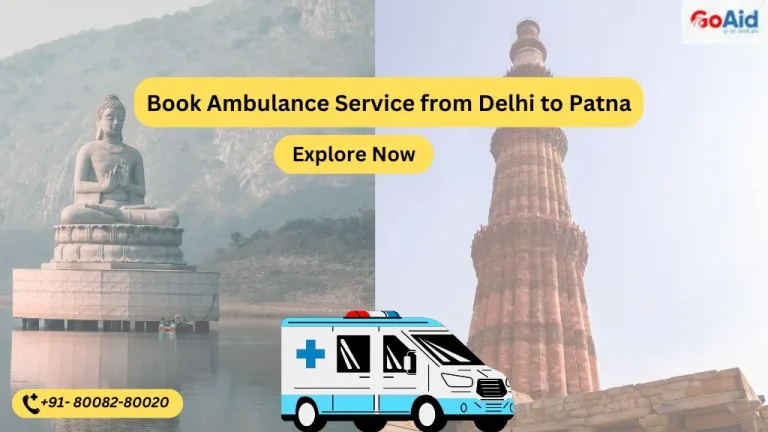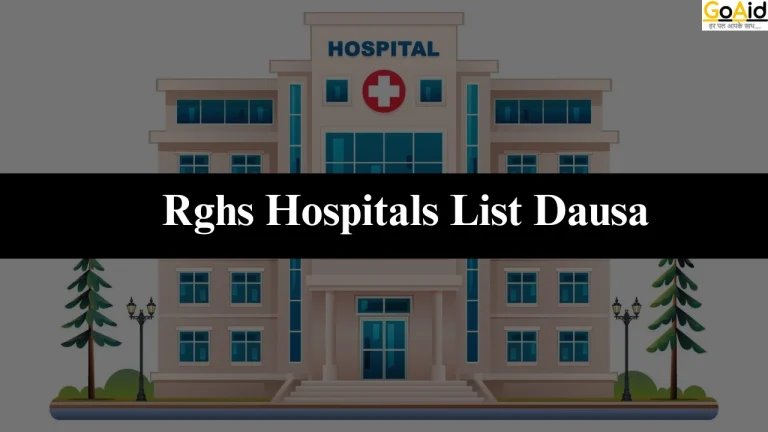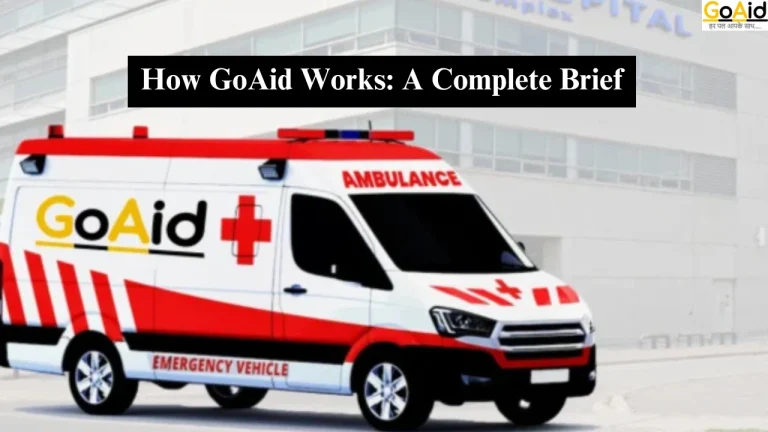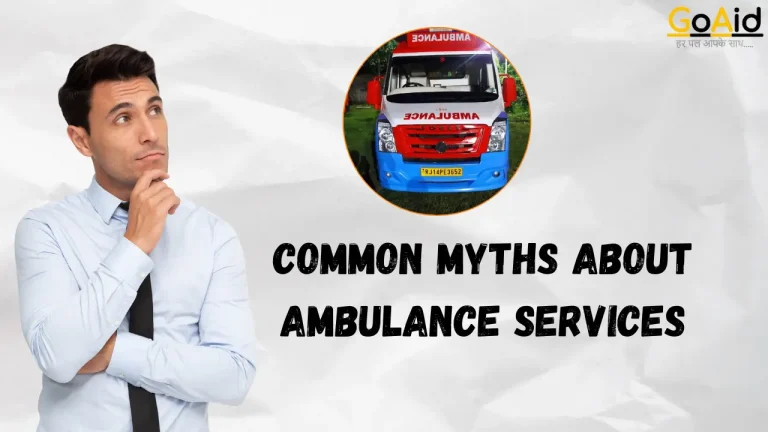In India, you all must have seen a movie named ŌĆś3 IdiotsŌĆÖ starring Amir Khan. There is one dialogue in that movie ŌĆ£Pizza can be delivered in 15 minutes but Not the Ambulance in even 30 minutesŌĆØ. We all have felt this dialogue and the need for ambulance services in needed areas and locations of India. But many of us donŌĆÖt know what hurdles & obstacles does an Ambulance passes through. So, being aware of why they get delayed is almost impossible.
This is why, in this blog, we have added complete details about the Common Causes of Ambulance Delays in India, we also have mentioned information about Challenges and Solutions to ambulances and Why Quick Response Time Matters. We have added the details about the Role of an Ambulance in India. If you are also excited to know about all these, then read our blog to the end.
So, let’s start-
The Role of an Ambulance in India
Ambulances play a critical role in India’s healthcare system, providing immediate medical response during emergencies. They are essential for stabilizing patients en route to hospitals, especially in life-threatening situations like heart attacks, strokes, and severe injuries.
In rural and remote areas, ambulances bridge the healthcare gap, ensuring timely access to medical facilities. They are vital during disasters and mass casualty events, facilitating rapid evacuation and on-site care.
Additionally, ambulances enable the inter-facility transfer of critical patients needing specialized treatment. Public awareness campaigns and training programs by ambulance services further enhance emergency responsiveness, underscoring their pivotal role in saving lives and improving healthcare outcomes.
What are the Common Causes of Ambulance Delays in India?
These are the few common causes of Ambulance Delays in India:
- Traffic congestion in urban areas
- Limited availability of ambulances
- Shortages of trained medical personnel
- Inadequate road infrastructure
- Geographic barriers in rural regions
- Lack of awareness on how to access emergency services
- Delays in dispatching ambulances due to communication issues
- Challenges in navigating through crowded streets
- Ambulance breakdowns or maintenance issues
- Inefficient coordination between emergency response agencies
Different types of Ambulance Services in India
These are the key types of ambulance services in India:
1. Basic Life Support (BLS) Ambulance:
Equipped with essential medical equipment such as oxygen cylinders, stretchers, and basic medications, BLS ambulances provide primary emergency care and transport for non-critical patients.
2. Advanced Life Support (ALS) Ambulance:
ALS ambulances are staffed with paramedics and equipped with advanced medical devices like defibrillators, cardiac monitors, and intravenous (IV) therapy equipment. They cater to critically ill or injured patients requiring intensive medical care en route to the hospital.
3. Normal Ambulance:
These ambulances are used to transport patients who do not require urgent medical attention. They are typically used for non-emergency transfers, such as taking patients to routine medical appointments.
4. Air Ambulance:
Air ambulances are aircraft equipped with advanced medical facilities to transport critically ill or injured patients quickly over long distances. They are crucial for emergency medical evacuations and inter-city or international transfers.
5. Oxygen Ambulance:
Specifically designed for patients needing continuous oxygen support, these ambulances are equipped with multiple oxygen cylinders and related equipment to ensure the patient’s oxygen levels are maintained during transport.
6. Event Ambulance:
Deployed at large gatherings, sports events, and public functions, event ambulances are on standby to provide immediate medical assistance in case of emergencies, ensuring the safety and well-being of attendees.
7. Surgery Ambulance:
These highly specialized ambulances are equipped to perform emergency surgical procedures on the way to the hospital. They include surgical instruments, anesthesia, and a sterile environment to handle critical surgical interventions.
8. Hospital Ambulance:
Dedicated hospital ambulances are used by healthcare facilities to transport patients between hospitals or from the hospital to other healthcare facilities. They ensure continuity of care during transfers.
9. Dead Body Freezer Box:
Used for the respectful transport of deceased individuals, these ambulances are equipped with freezer boxes to preserve the body during transport, ensuring compliance with health and safety regulations.
10. Mortuary Van:
Mortuary vans are specifically designed for the dignified transport of deceased individuals from hospitals to their homes or mortuaries. They provide a respectful and secure means of handling the deceased.
Key Components of Ambulance Services in India
These are the Key Components of Ambulance Services in India:
1. Trained Medical Personnel:
Ambulances are staffed with skilled medical professionals, including paramedics, emergency medical technicians (EMTs), and sometimes doctors, who provide immediate care and stabilize patients during transport.
2. Communication Systems:
Efficient communication networks, including radio systems and mobile connectivity, link ambulances with hospitals and emergency dispatch centers, ensuring coordinated and timely responses.
3. Medical Equipment:
Ambulances are equipped with essential medical tools such as stretchers, defibrillators, oxygen supply, suction machines, cardiac monitors, and emergency medications to handle various medical emergencies.
4. Vehicle Design and Maintenance:
Ambulance vehicles are designed for quick and safe transport, with features like sirens, flashing lights, and ergonomic interiors. Regular maintenance ensures reliability and readiness for emergencies.
5. Emergency Response Protocols:
Standard operating procedures (SOPs) and protocols guide the actions of ambulance personnel, ensuring consistent and effective emergency care delivery.
6. Integration with Healthcare Facilities:
Strong integration with hospitals and trauma centers ensures seamless patient handover and continuity of care upon arrival, enhancing patient outcomes.
7. Public Awareness and Training:
Public education campaigns and first aid training programs by ambulance services increase community awareness and preparedness, improving overall emergency response effectiveness.
8. Regulatory Compliance:
Adherence to government regulations and standards ensures the quality and safety of ambulance services, including proper licensing, certification of personnel, and vehicle standards.
9. Funding and Resources:
Adequate funding and resource allocation from government bodies, private sectors, and non-governmental organizations support the sustainability and expansion of ambulance services.
10. Technological Advancements:
Utilization of modern technologies such as GPS tracking, telemedicine, and electronic health records (EHR) enhances the efficiency, accuracy, and quality of emergency medical services provided by ambulances.
What is an Ambulance Response time?
Ambulance response time is the duration between the moment an emergency call is received and the arrival of the ambulance at the scene. It is a critical metric for emergency medical services, as shorter response times can significantly impact patient survival and recovery rates. Efficient dispatch systems, well-maintained vehicles, and strategically located ambulance stations are essential factors in minimizing response times and improving emergency care outcomes.
5 reasons why the Response time of an Ambulance matters in Medical Emergency
These are the 5 key reasons why the Response time of an Ambulance matters in a Medical Emergency:
1. Increases Survival Rates:
Faster response times ensure timely medical intervention, which is crucial for life-threatening conditions such as heart attacks, strokes, and severe trauma, significantly improving chances of survival.
2. Reduces Complications:
Prompt medical attention can prevent the progression of injuries or illnesses, reducing the risk of complications and long-term health issues.
3. Improves Recovery Outcomes:
Quick response and early treatment can lead to better recovery outcomes, minimizing the extent of medical interventions required and shortening hospital stays.
4. Enhances Patient Comfort:
Rapid arrival of medical assistance can alleviate patient anxiety and pain, providing immediate relief and stabilizing the patient’s condition.
5. Optimizes Healthcare Resources:
Efficient ambulance services reduce the burden on emergency departments by providing necessary care en route, ensuring patients receive appropriate treatment sooner, and improving overall healthcare system efficiency.
What is the Average Response time of Ambulance Services?
In India, ambulance response times vary due to factors like traffic congestion, limited resources, and infrastructure challenges. Urban areas may experience average wait times of 15 to 30 minutes or more.
To improve this, investments in infrastructure, expanding ambulance fleets, enhanced training for medical personnel, public awareness campaigns, and technology integration are vital. These measures can reduce delays and ensure timely medical care for all in need.
Challenges & Solutions for Ambulance Services in India
These are the key Challenges and Solutions for Ambulance Services in India:
Challenges:
- Traffic Congestion: Heavy traffic in urban areas leads to delays in ambulance arrival.
- Limited Resources: Shortages of ambulances and trained medical staff hinder emergency response.
- Infrastructure Deficiencies: Poor road conditions impede the progress of ambulances, especially in rural areas.
- Geographical Barriers: Remote locations and difficult terrain make it challenging to reach patients quickly.
- Communication Issues: Lack of efficient communication systems delays ambulance dispatch and coordination.
- Equipment Availability: Insufficient medical equipment onboard ambulances affects the quality of care provided.
- Financial Constraints: Funding shortages limit the expansion and maintenance of ambulance fleets.
- Public Awareness: Many people lack knowledge of how to access emergency services, leading to delays in seeking help.
- Cultural and Social Factors: Traditional beliefs and practices may influence perceptions of emergency medical care, impacting response times.
- Policy and Regulation: Inconsistent regulations and standards across regions affect the uniformity and efficiency of ambulance services.
Solutions:
- Investment in Infrastructure: Improving road networks and addressing traffic congestion to facilitate faster ambulance movement.
- Expansion of Fleet: Increasing the number of ambulances and ensuring proper maintenance to meet demand.
- Training and Recruitment: Enhancing training programs and recruiting more paramedics and emergency medical technicians.
- Technology Integration: Implementing GPS tracking systems and mobile applications for efficient ambulance dispatch and navigation.
- Public Awareness Campaigns: Educating the public about accessing emergency services and promoting a culture of timely response.
- Community Engagement: Involving local communities in emergency preparedness and response efforts.
- Partnerships with the Private Sector: Collaborating with private healthcare providers to supplement government ambulance services.
- Standardization of Protocols: Establishing uniform protocols and guidelines for ambulance operations nationwide.
- Financial Support: Allocating adequate funding for ambulance services to ensure sustainability and quality of care.
- Policy Reform: Updating regulations to improve ambulance service standards and address systemic challenges.
Conclusion
In conclusion, the challenges around ambulance delays in India are multifaceted & ranging from traffic congestion and resource limitations to infrastructure deficiencies and cultural factors. However, understanding the critical role of quick response times in saving lives underscores the urgency to address these issues comprehensively.
By investing in infrastructure, expanding ambulance fleets, enhancing training, leveraging technology, and raising public awareness, significant strides can be made in improving emergency medical services. Implementing these solutions not only mitigates delays but also ensures prompt access to life-saving care, ultimately safeguarding the well-being of communities across India.

